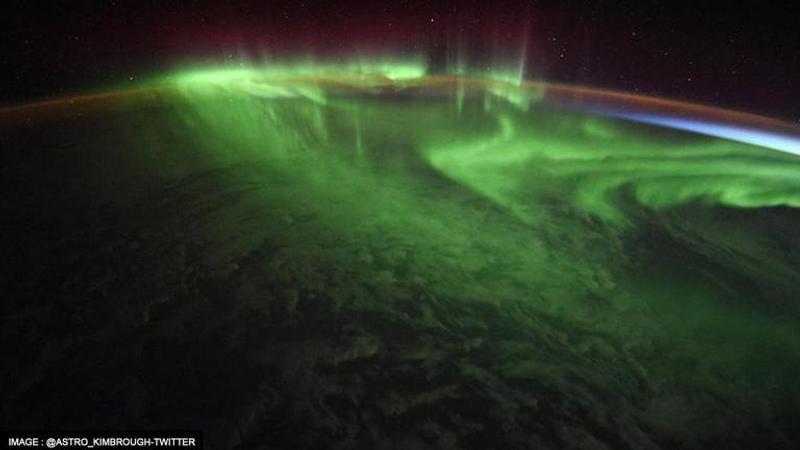Published 21:23 IST, November 1st 2021
Solar storm that hit Earth triggers stunning auroras; skywatchers thrilled
The thrill of Halloween was multiplied for skywatchers in the north as the solar storm, that reached Earth on October 31, put on a show with glowing auroras.

The thrill of Halloween was multiplied for skywatchers in the north as the solar storm, that reached the Earth on October 31, put on a show with glowing auroras. Earlier, the National Oceanic and Atmospheric Administration's (NOAA) Space Weather Prediction Center had issued a warning that the Earth is likely to be hit by a geomagnetic storm. While other repercussions of the storm might have gone unnoticed, but the dancing auroras in the sky were something the stargazers didn't miss. Take a look at the majestic auroras captured during the solar storm.
In a Twitter post, a user shared the glowing northern lights that lit up the Bamburgh Castle and Grace Darling's grave whereas another wrote that the visuals were "worth the wait".
Even the photographers, who had nothing but their phones chimed in to capture the bright lights that were dancing over Iceland. Another user shared the "incredible sight" of "the dancing miracles in the sky" while some showed off the auroras lighting up their backyard.
NOAA's warning about the storm
Earlier on October 29, the Space Weather Prediction Center, part of the NOAA, had revealed that the sun had unleashed an X1-class flare that would soon reach the Earth. According to NASA, the X-class denotes the most intense flares, while the number provides more information about its strength. An X2 is twice as intense as an X1, an X3 is three times as intense. It had even warned that the phenomenon would cause a G3-class geomagnetic storm in the upper atmosphere of the planet and might result in technical glitches in the communication services.
Making several predictions, the Prediction Center had said that the spacecrafts and satellites might face issues with surface charging and orientation and increased drag on low-Earth orbiters are also likely. Radio and navigation services, offered by the satellites, are also prone to malfunctions. While these warnings sounded scary, what was most apparent were the glowing northern lights, that had extended to lower latitudes than usual owing to the solar storm.
Quite often, the sun keeps generating powerful bursts of radiation which, when intense enough, can disturb the atmosphere in the layer where GPS and communications signals travel. However, harmful radiation from a flare cannot pass through Earth’s atmosphere to physically affect humans on the ground.
Image: Twitter/@Astro_Kimbrough
Updated 21:23 IST, November 1st 2021



